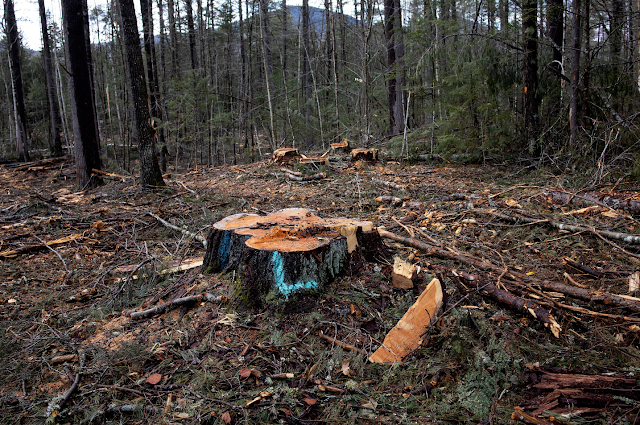The Critical Path to Controlling Deforestation
Deforestation is a global problem that threatens the stability of our planet's ecosystems. It is the process of clearing forests or trees for agricultural, industrial, or other human activities. The consequences of deforestation are dire, including soil erosion, climate change, and the loss of biodiversity.
There are many reasons for deforestation, but one of the most significant is the demand for agricultural land. As the world's population continues to grow, so does the need for more food. This demand puts pressure on farmers and ranchers to clear more land for crops and livestock. Another reason for deforestation is logging. The demand for timber and wood products has increased, leading to the clearing of vast areas of forests.
Controlling deforestation is critical to preserving the health of our planet. There are several ways to tackle this issue, including reforestation, sustainable agriculture, and better forest management practices. In this article, we will discuss the critical path to controlling deforestation.
Understanding the Causes of Deforestation
Before we can control deforestation, we must understand its causes. As mentioned earlier, the primary causes of deforestation are agriculture, logging, and infrastructure development. These activities are driven by economic and social factors, such as the need for food, timber, and housing. The challenge is finding a balance between these needs and preserving our planet's natural resources.
The Impact of Deforestation
Deforestation has significant impacts on the environment and our planet's ecosystems. Trees absorb carbon dioxide from the atmosphere, helping to regulate the Earth's climate. When trees are cut down, the carbon stored in them is released back into the atmosphere, contributing to climate change.
Deforestation also contributes to soil erosion, which can lead to landslides and the loss of fertile soil. This loss of soil can make it difficult for farmers to grow crops, leading to food insecurity. Deforestation also has a significant impact on biodiversity. Forests are home to millions of species, and the loss of these habitats can lead to the extinction of these species.
The Critical Path to Controlling Deforestation
Controlling deforestation is not a simple task. It requires a multi-faceted approach that addresses the root causes of deforestation. The critical path to controlling deforestation involves the following steps:
Promoting Sustainable Agriculture
Agriculture is one of the leading causes of deforestation. As the world's population continues to grow, the demand for food will increase, putting pressure on farmers to clear more land for crops. However, there are ways to promote sustainable agriculture that can reduce the need for deforestation.
One of the ways to promote sustainable agriculture is to encourage farmers to adopt agroforestry practices. Agroforestry involves planting trees and crops together in the same area, creating a sustainable and diverse ecosystem. This practice can help to reduce soil erosion and improve soil fertility, making it easier for farmers to grow crops.
Another way to promote sustainable agriculture is to support small-scale farmers. Small-scale farmers often use traditional farming practices that are environmentally friendly. By supporting these farmers, we can promote sustainable agriculture and reduce the need for deforestation.
Implementing Better Forest Management Practices
Logging is another significant cause of deforestation. However, not all logging is bad. When done sustainably, logging can be an essential part of forest management. Sustainable logging involves selectively cutting down trees and replanting them, ensuring the forest's long-term health.
To implement better forest management practices, governments and companies must work together to create sustainable forestry programs. These programs should include clear guidelines for logging and reforestation, as well as monitoring and enforcement measures.
Protecting Forests
Protecting forests is critical to controlling deforestation. Governments and companies must work together to protect forests from illegal logging and land clearance. This can be done by implementing policies and regulations that prohibit deforestation, as well as by providing incentives for companies to use sustainably sourced materials.
One effective way to protect forests is through the creation of protected areas and national parks. These areas are designated as off-limits for deforestation and other destructive activities, helping to preserve the natural habitat and biodiversity.
Reforestation and Afforestation
Reforestation and afforestation are essential strategies for controlling deforestation. Reforestation involves planting trees in areas where forests have been cut down, while afforestation involves planting trees in areas where there were no forests before.
Reforestation and afforestation can help to restore ecosystems, prevent soil erosion, and sequester carbon from the atmosphere. These strategies can also provide economic benefits by creating jobs in the forestry sector.
Addressing Consumer Demand
Finally, addressing consumer demand is critical to controlling deforestation. Consumers can drive demand for sustainably sourced products by choosing to purchase goods that have been certified by organizations such as the Forest Stewardship Council (FSC) and the Rainforest Alliance.
Companies can also play a role in addressing consumer demand by committing to using sustainably sourced materials. This can be done through certification programs or by working directly with suppliers to ensure that they are using sustainable practices.
Controlling deforestation is critical to preserving the health of our planet. The critical path to controlling deforestation involves promoting sustainable agriculture, implementing better forest management practices, protecting forests, reforestation and afforestation, and addressing consumer demand.
Governments, companies, and individuals must work together to tackle this issue. By taking action to control deforestation, we can ensure that our planet's natural resources are preserved for future generations.
Tags
Deforestation

